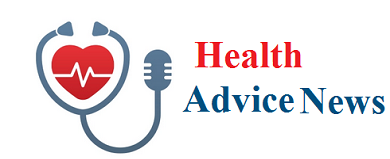Eff

Portrait of two confident young doctors working in a hospital
ective patient care extends beyond the walls of a single facility. When professionals from different specialties work together, individuals receive well-rounded attention tailored to their unique needs. Coordination between medical teams, therapists, and support staff ensures that treatments align seamlessly, reducing redundancy and improving efficiency. By fostering clear communication and shared goals, professionals can elevate patient experiences and deliver more precise, data-driven solutions.
Enhancing Collaboration for Better Patient Support
Strong collaboration also helps bridge gaps between primary and specialized approaches. By ensuring that treatment plans are cohesive, individuals experience fewer complications and improved recovery rates. In addition, professionals working together can share valuable insights, leading to innovative approaches that enhance overall quality. When various experts pool their expertise, they create a system that is both responsive and adaptive to each patient’s evolving needs. The integration of specialists, from cardiologists to physical therapists, means that no aspect of patient assistance is overlooked, ultimately fostering a more effective and comprehensive treatment approach.
Streamlining Processes for Improved Efficiency
A healthcare partners medical group eliminates unnecessary delays and inefficiencies. When organizations integrate their systems, vital information flows smoothly between providers, leading to faster diagnosis and timely interventions. Digital tools and automated reporting mechanisms further reduce administrative burdens, allowing professionals to dedicate more time to patient-focused strategies. By optimizing these processes, facilities can reduce operational costs while simultaneously enhancing service quality. Moreover, seamless data sharing minimizes the risks of miscommunication and unnecessary procedures. Patients benefit when their records are easily accessible by authorized professionals, reducing duplication of tests and ensuring consistent treatment plans. An optimized system not only improves operational efficiency but also fosters a smoother, more coordinated experience that enhances patient confidence and satisfaction. Additionally, modern electronic systems allow for real-time updates, ensuring that all involved professionals remain informed about changes in a patient’s condition. This level of synchronization helps prevent treatment delays and enhances decision-making, ultimately leading to better patient outcomes.
Strengthening Preventive and Personalized Approaches
Collaboration among specialized teams allows for proactive health management rather than reactive treatment. With shared data and insights, experts can identify early warning signs and implement targeted intervention strategies. Personalized treatment plans become more effective when providers have a comprehensive understanding of a patient’s history and ongoing needs. This approach not only improves recovery rates but also empowers individuals to take a more active role in maintaining their well-being. Preventive strategies, such as routine screenings and lifestyle coaching, become more impactful when coordinated across various specialties. Patients are more likely to engage in long-term wellness initiatives when they receive continuous support from an interconnected network of professionals. By implementing predictive analytics and early detection methods, organizations can significantly reduce the prevalence of chronic conditions, ultimately leading to a healthier population with improved long-term outcomes. In addition, patient education plays a key role in preventive approaches. When professionals work together to provide accessible and easy-to-understand health information, individuals are more likely to adopt healthier habits. Whether through diet modifications, physical activity programs, or mental health support, preventive strategies tailored to the specific needs of each patient lead to sustained improvements in overall well-being. Furthermore, integrating family members and caregivers into the process fosters a supportive environment that encourages adherence to treatment and lifestyle recommendations.
Expanding Access to Comprehensive Resources
Patients benefit significantly when they have access to a diverse range of services under a unified framework. Coordinated efforts between medical professionals, rehabilitation specialists, and community outreach programs ensure that individuals receive continuous support. From post-treatment assistance to long-term wellness initiatives, an interconnected system helps address a broad spectrum of needs, leading to a more holistic and patient-centered experience. When organizations extend their reach through strategic healthcare partners medical group, patients gain access to an even wider range of resources, including mental wellness programs, nutrition counseling, and remote monitoring services. Telehealth solutions and mobile initiatives make it easier for individuals to connect with experts, ensuring that quality assistance is accessible regardless of location. By leveraging these expansive networks, organizations can close gaps and provide more equitable solutions for diverse populations. Additionally, financial barriers often prevent individuals from receiving the assistance they need. Through collaborative efforts, medical institutions can offer more affordable solutions, including subsidized programs, insurance coordination, and alternative treatment options. Patients in rural and underserved areas especially benefit from a primary care doctor in Las Vegas, as they gain access to specialists and resources that may not be available in their local communities. By utilizing a network of professionals who understand the specific challenges faced by different demographics, providers can develop solutions that address unique patient concerns and improve accessibility for all.
Elevating Standards for Patient Success
By fostering strong partnerships and prioritizing seamless collaboration, the primary care doctor in Las Vegas can set new standards for patient assistance. A well-integrated network leads to streamlined operations, proactive health strategies, and enhanced access to essential resources. Ultimately, this approach ensures that every individual receives the comprehensive attention necessary for optimal recovery and long-term well-being. Investing in collaborative initiatives not only benefits patients but also enhances professional development for those working within these networks. As more organizations embrace a partnership-driven model, the collective impact on community well-being will grow, setting a higher benchmark for excellence in patient support. Looking ahead, the role of technology will continue to play a pivotal role in advancing a primary care doctor in Las Vegas.
